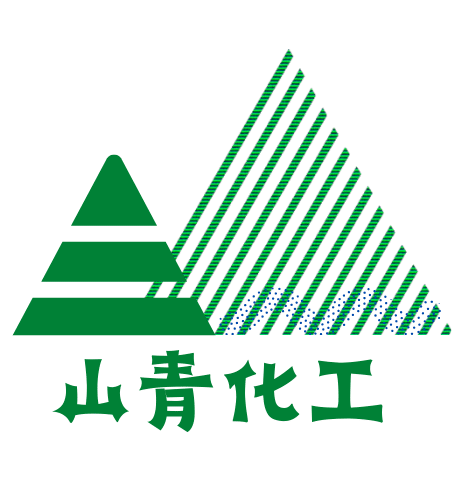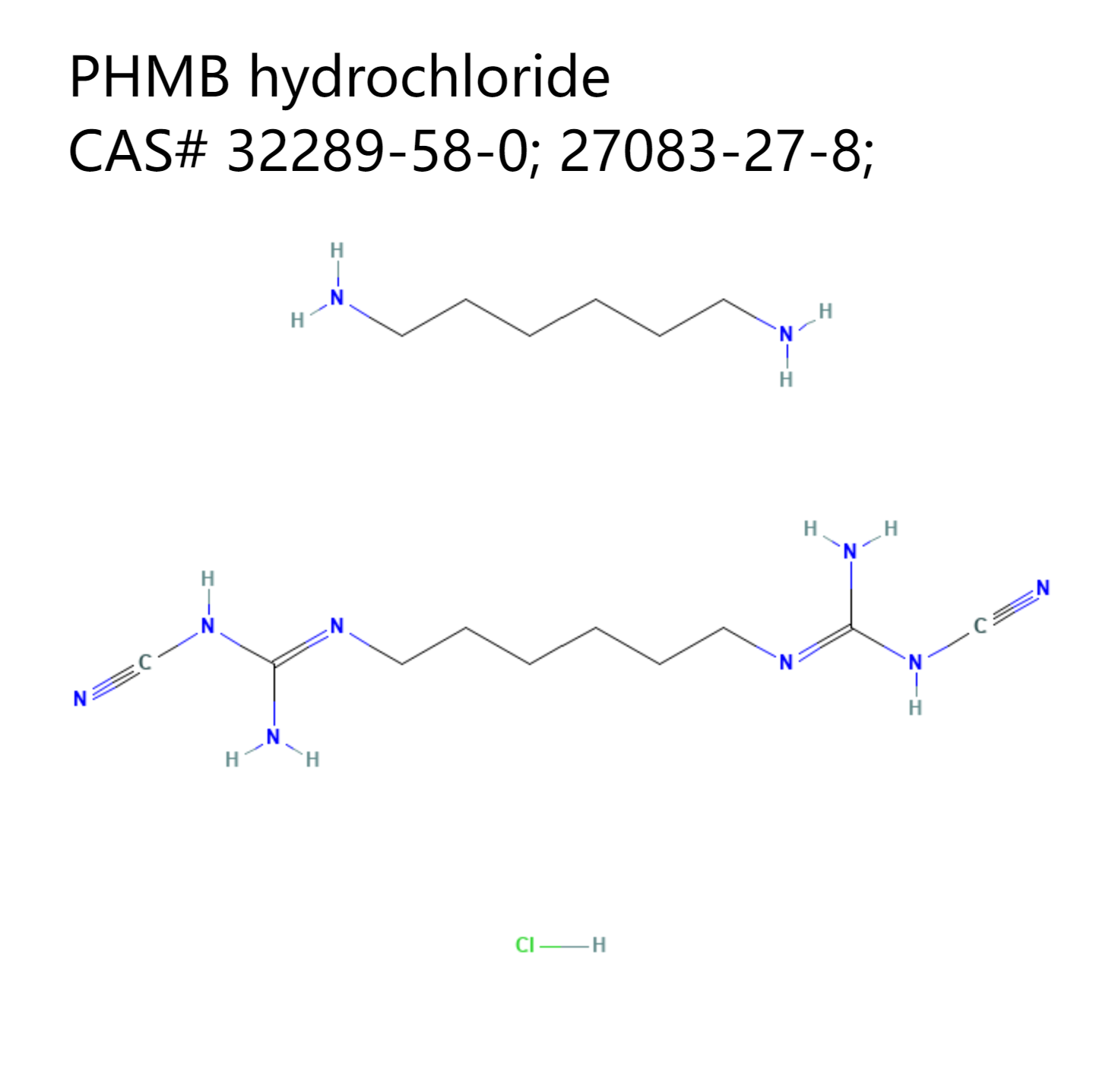Polyhexamethylene biguanide, hydrochloride;
PHMB hydrochloride;
CAS Number: 32289-58-0; 27083-27-8;
Le chlorhydrate de PHMB, un agent antimicrobien cationique à large spectre, atteint son objectif bactéricide en inhibant l’activité de la membrane cellulaire.
En tant qu’agent antimicrobien actif sur la membrane cellulaire, le PHMB inhibe l’activité bactérienne mieux que celle des champignons, et son mécanisme antimicrobien est à peu près le suivant :
Le PHMB est un composé cationique polymérisé, qui est facilement adsorbé par divers types de bactéries généralement chargées négativement, ce qui inhibe la fonction de division des bactéries et leur fait perdre leur capacité de reproduction.
| Solution | Solid | |
| Appearance | Colorless clear to slightly pale yellow liquid | White to slight yellow hygroscopic powder |
| Odor | Characteristic | Characteristic |
| Turbidity [NTU] | Max. 10 | — |
| Solid component [%] | 19.0 to 21.0 | Min. 95.0 |
| Density at 20℃ [g/ml] | 1.039 to 1.050 | — |
| pH-Value at 25℃ | 4 to 6 | 4 to 7 |
| Absorbance value (1%, 237nm) | Min. 400 | Min. 400 |
| Absorbance ratio (237nm / 222nm) | 1.2 to 1.6 | 1.2 to 1.6 |
The following is the original English text.
Ce qui suit est le texte original anglais.
Formula:
1. CAS 32289-58-0: (C8H17N5·ClH)n; Poly(iminoimidocarbonyliminoimidocarbonyliminohexamethylene), hydrochloride;
2. CAS 27083-27-8: (C10H18N8·C6H16N2)x·xClH; Guanidine, N,N »’-1,6-hexanediylbis[N’-cyano-, polymer with1,6-hexanediamine, hydrochloride;
3. CAS: 91403-50-8; EC: 618-745-0;
IUPAC names: Poly(hexamethylenbiguanid)-hydrochlorid
Related chemical:
PHMB; CAS# 28757-47-3;
(C8H17N5)n
Poli (iminocarbonimidoiliminocarbonimidoilimino-1 ,6-hexanodiil);
Poly(iminocarbonimidoyliminocarbonimidoylimino-1,6-hexanediyl); Polyhexamethylenebiguanidine; PHMB without HCl;
PHMB hydrochloride, a cationic broad-spectrum antimicrobial agent, achieves bactericidal purpose by inhibiting cell membrane activity.
As a cell membrane active antimicrobial agent, PHMB inhibits bacterial activity better than that of fungi, and its antimicrobial mechanism is roughly as follows:
PHMB is a polymerized cationic compound, which is easily adsorbed by various types of bacteria that are usually negatively charged, thus inhibiting the division function of the bacteria and making the bacteria lose the ability to reproduce.
Features:
1. HPMB has the ability to inhibit Gram-positive bacteria, Gram-negative bacteria, fungi (many kinds of ringworm and mold) and yeast.
2. PHMB has rapid inhibitory effect on E. coli, Staphylococcus aureus and Candida albicans.
3. PHMB: LD50>5000mg/kg, HPMB is skin friendly, human and environment friendly.
Technical Data:
| 20% Solution | Solid | |
| Appearance | Colorless clear to slightly pale yellow liquid | White to slight yellow hygroscopic powder |
| Odor | Characteristic | Characteristic |
| Turbidity [NTU] | Max. 10 | — |
| Solid component [%] | 19.0 to 21.0 | Min. 95.0 |
| Density at 20℃ [g/ml] | 1.039 to 1.050 | — |
| pH-Value at 25℃ | 4 to 6 | 4 to 7 |
| Absorbance value (1%, 237nm) | Min. 400 | Min. 400 |
| Absorbance ratio (237nm / 222nm) | 1.2 to 1.6 | 1.2 to 1.6 |
Areas of application:
PHMB is widely used in oil field chemicals, water treatment chemicals, daily chemicals, textile printing and dyeing, swimming pool disinfection, flower antiseptic treatment, animal husbandry, aquaculture, agriculture, pet antibacterial, soil improvement, environmental disinfection, disinfection products, etc.
In aquaculture, HPMB can rapidly inhibit Gram-negative bacteria, floating Vibrio, Vibrio parahaemolyticus, Vibrio algolyticus and other harmful bacteria in seawater, and has good preventive and therapeutic effects on various diseases caused by bacteria in South American white shrimp and other aquatic products.
Chemical Name:
Poly(iminoimidocarbonyliminoimidocarbonyliminohexamethylene),hydrochloride;
Poly(hexamethylenebiguanide) hydrochloride;
Poly(iminocarbonimidoyliminocarbonimidoylimino-1,6-hexanediyl), hydrochloride;
Poly(hexamethylene diguanide) hydrochloride;
Poly[imino(carbonimidoyl)imino(carbonimidoyl)iminohexane-1,6-diyl] hydrochloride (1:?);
Guanidine,N,N »’-1,6-hexanediylbis[N’-cyano-,polymer with 1,6-hexanediamine, hydrochloride;
N,N »’-1,6-Hexanediylbis(N’-cyanoguanidine),hexamethylenediamine polymer, hydrochloride;




